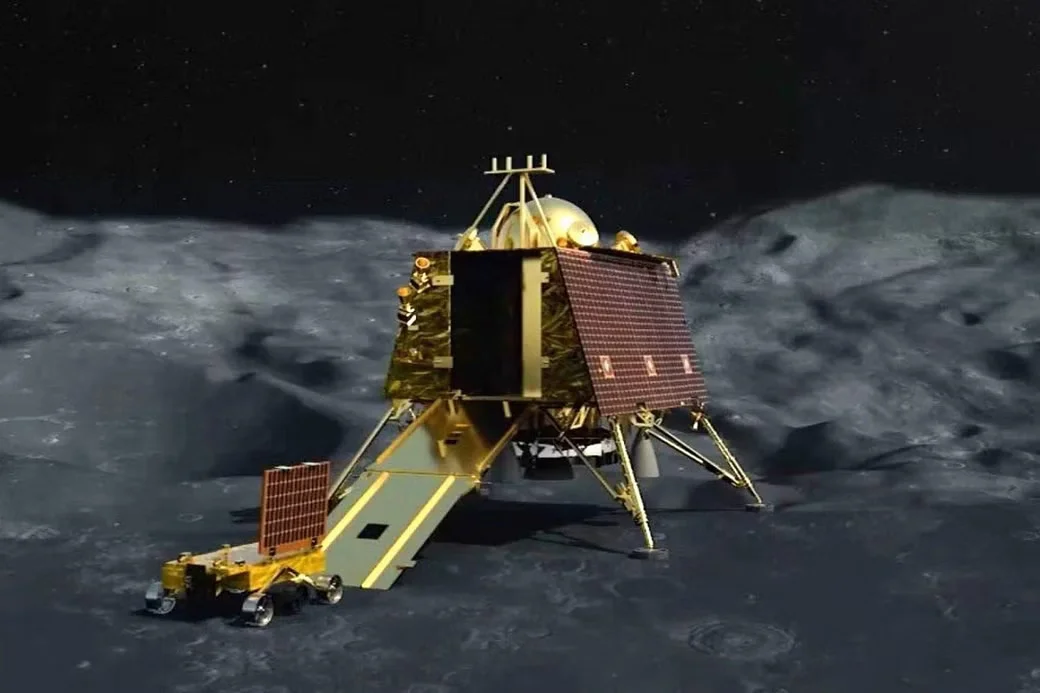The Indian Space Research Organisation (ISRO) has christened the lunar south pole landing site of the Chandrayaan-3 spacecraft as “Shiv Shakti Point.” The announcement was made by Sreedhara Panicker Somanath, ISRO’s chairman, in a video message that also shed light on the significance of the chosen names.
The lunar landing site, where Chandrayaan-3 made a historic touchdown, has been dubbed “Shiv Shakti Point” to reflect its association with Hindu mythology. “Shiv” and “Shakti” are Sanskrit words that represent “Shiva,” the mighty god, and “power,” respectively. This naming choice encapsulates not only the divine aspect but also the strength and determination of female scientists, drawing a connection between mythology and modern science.
This innovative name was suggested by Indian Prime Minister Narendra Modi during his visit to the ISRO headquarters in Bengaluru on August 26. The suggestion was welcomed by ISRO, aligning with the organization’s spirit of pushing boundaries and embracing diverse influences.
Alongside “Shiv Shakti Point,” another notable lunar site has received a moniker. The area where the Chandrayaan-2’s Vikram lander experienced an unfortunate crash in 2019 will now be known as “Tiranga Point.” “Tiranga,” derived from Sanskrit, translates to “three colors,” a colloquial reference to the revered tricolor flag of India. This naming choice resonates with national pride and identity.
Prime Minister Modi applauded the selection of these names, stating, “This will serve as an inspiration for every endeavor undertaken by India. It will remind us that setbacks are not definitive.” The prime minister’s words underscore the importance of embracing challenges and learning from them, a sentiment that holds significance not only in space exploration but also in life.
While ISRO’s announcement has sparked enthusiasm and appreciation, these names await formal approval from the International Astronomical Union (IAU), which officially designates names for celestial bodies and their features. The collaboration between ISRO and IAU is expected to culminate in the formal recognition of these symbolic names.
The Chandrayaan-3 mission’s recent achievements extend beyond nomenclature. Its robotic lander and rover, Vikram and Pragyan, embarked on a groundbreaking journey of discovery. During their stay on the lunar surface, they undertook the Chandra’s Surface Thermophysical Experiment (ChaSTE), marking the maiden execution of such an experiment on the moon. This pioneering initiative enhances our understanding of lunar conditions and furthers scientific exploration.
As India’s space program continues to reach new heights, the naming of key lunar sites intertwines history, culture, and scientific endeavor. “Shiv Shakti Point” and “Tiranga Point” become more than mere names; they symbolize the nation’s journey into the cosmos while honoring its heritage. With each mission, ISRO continues to carve its mark in both the celestial and cultural realms.




